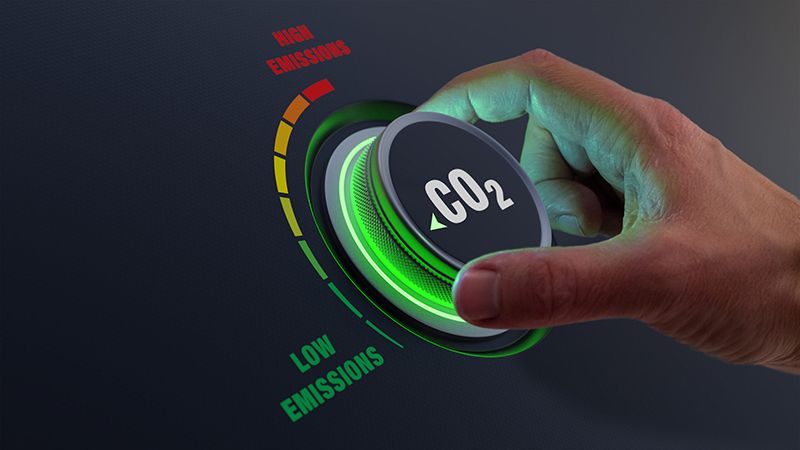Traditional carbon accounting models are missing the mark on Scope 3 emissions estimation by up to 2,480%, according to analysis by climate intelligence firm Carbon Responsible. This has implications for asset valuation, regulatory and fiduciary compliance, asset selection and SBTi target validation, the firm said.
Carbon Responsible’s study compared Environmentally Extended Input Output (EEIO) estimates to Ada, its AI-powered emissions engine, benchmarking against verified 2023 emissions data across a sample of FTSE 100 companies. Compared to the high levels of inaccuracy from EEIO estimates, Ada managed to increase the precision of Scope 3 emissions reporting by 97%, claimed Matthew Paver, COO of Carbon Responsible.
“This represents a step-change in emissions measurement capability,” he continued. “When you’re 97% more accurate than the industry standard, you’re no longer in the realm of estimation – you’re capturing investment-grade data.
Paver added regulators are starting to notice some emissions disclosures are based on proxies from six years ago. “What’s being accepted in ESG reports today would never pass audit in a financial statement. Procurement, risk modelling and capital allocation all now demand a firmer grasp of emissions data. Even if it feels like attention is shifting away right now, the CFO’s office can no longer afford to treat carbon as a compliance footnote.
“There’s a widespread misconception that Scope 3 data is just a best guess, but if you’re setting net-zero targets, allocating capital or filing regulatory disclosures, guesswork isn’t good enough.”
Financial, regulatory and reputational risk
Carbon Responsible’s findings come as regulators worldwide tighten requirements for emissions reporting. The current iteration of the EU’s Corporate Sustainability Reporting Directive, for example, now mandates traceable, up-to-date and auditable emissions data – placing firms using outdated measurement methods at growing financial, regulatory and reputational risk.
Flawed Scope 3 data affects asset valuation, the company noted, especially for carbon-intensive holdings where transition risks are significant. Additionally, within the same sector, companies previously appearing to have similar emissions profiles show dramatic differences when measured accurately, creating both alpha opportunities and significant risk factors previously hidden from investors.
With CSRD and the EU’s Sustainable Finance Disclosure Regulation mandating accurate emissions reporting, pension funds and institutional investors are also facing increasing legal exposure when making allocation decisions based on inaccurate data. Improving precision enables trustees to fulfil their fiduciary duties with greater confidence.
Meanwhile, for pension funds expecting their portfolio companies to set science-based targets, the research shows many targets are based on fundamentally flawed baselines, compromising the credibility of net-zero alignment claims across investment portfolios.
“You wouldn’t invest based on a credit rating built from an industry average in 2017,” Paver added. “So, why are firms making climate decisions based on the same approach?”
Carbon Responsible’s Ada platform, therefore, aims to solve what it calls the “missing middle” of carbon data: mid-tier suppliers, unlisted investments and complex value chains where emissions are material but poorly understood.
“What we’re witnessing is the end of ESG’s ‘honour system’,” concluded Paver. “When your AI solution is 30 times more accurate than traditional methods, it transforms not just reporting, but the entire approach to climate risk management and decarbonisation strategy.”
How EEIO estimates are used
Scope 3 emissions, which include supply chain, investment and product-use emissions, can account for more than 80% of a firm’s carbon footprint. While such emissions remain difficult to measure, Carbon Responsible stated that global organisations such as the GHG Protocal and the Partnership for Carbon Accounting Financials (PCAF) endorse the use of EEIO estimates using spend-based data.
However, this has been disputed by Angélica Afanador, executive director at PCAF: “We are fully aware that EEIO models can be imprecise. However, it is absolutely incorrect to state that PCAF promotes them. EEIO models have the lowest data quality score and are often used as a starting point in the greenhouse gas accounting journey. They also help fill gaps when higher-quality data is unavailable and are useful for conducting hotspot analyses. This allows financial institutions to identify asset classes and sectors where they should focus their efforts on obtaining better quality data and managing emissions more effectively.
“Accessing data is a challenge in greenhouse gas accounting across all industries, but it should not deter us from starting the journey. The process itself can prompt stakeholders to develop solutions that support better data collection. Ideally, this will lead to a point where financial institutions’ clients and investees also measure and report their emissions. With this data, financial institutions would have more precise information to measure the emissions associated with their financial activities.
“Therefore, the claim that PCAF promotes using poor-quality data is entirely unfounded. In fact, PCAF also develops tools, sets up working groups, and works with accredited partners to help our signatories improve their data quality over time.”








